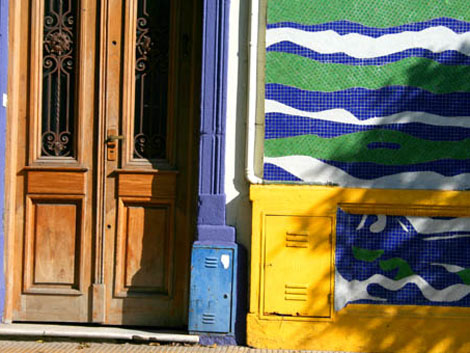Never heard of the large southeastern barrio of Barracas? Well maybe that’s because this isn’t the 19th century! Back then it was very much the place to be…Then along came the yellow fever epidemic and everything changed. But we’re getting ahead of ourselves. Let’s delve into the past and the present of this infrequently traveled barrio.
An introduction to Barracas
Barracas borders La Boca and San Telmo to the north. To the south, it touches the Riachuelo, which is the river that forms the capital federal’s southern boundary.
The word ‘barracas’ in Spanish refers to temporary houses constructed using rudimentary materials – in other words, shacks – and this was how the barrio began: as shacks on the banks of the Riachuelo.
Later, during the 19th century, Barracas became a wealthy barrio, and its Avenida Santa Lucía contained many of the city’s most famous stores. In 1871 however, the yellow fever epidemic struck. It swept through the southern areas of the city such as Barracas because they were close to the damp riverfront areas that incubated the mosquitoes that in turn spread the disease.
The yellow fever epidemic caused the wealthy residents of Barracas to flee to the northern areas of the city. Just as happened in neighboring San Telmo, the flight of wealthier families from Barracas turned it overnight into a working-class area and provided space for immigrants, particularly from Italy, to find homes there. It has remained a modest, working-class suburb ever since.
Things to see, do or both
You won’t find Barracas on many tourist maps of Buenos Aires, but in fact it has some places of interest. One is Pasaje Lanín, which is a cobblestoned street in where all the houses have been decorated with colorful tile mosaics. It’s the project of an artist who lives on the street, Marino Santa María. There’s also an open-air arts festival on the Pasaje Lanín every weekend in the second half of the year (July through December).
The resident impressive church of the barrio is the gothic and beautiful Santa Felicitas. It was built not by the Catholic Church but by the family of Felicitas Guerrero, a rich and beautiful widow who was shot to death by a jealous lover in 1872 (it’s quite a story). There are a lot of urban myths about Felicitas Guerrero and about the church, which you can hear if you do one of the guided tours that are offered.
Nightlife and restaurants
Barracas is pretty far to the quiet/residential end of the spectrum, so your nightlife options are limited. It’s not a place people live for the nightlife options, and it’s not a place people visit for that reason either.
• One nightspot worthy of mention is Ingratabar, which is located on Pasaje Lanín. It’s a decent wine bar featuring regular music en vivo. More information and photos can be found here.
• A good parrilla is Lanín (Suarez 1999) (yes, everything good in Barracas is either located on Pasaje Lanín or called Lanín. Get over it.) You know the deal: great meat at amazing prices. For those wanting to eat themselves to death the parrillada for two is the way to go (go on, try and finish it!).
• The best restaurant in Barracas is almost certainly Caseros (Caseros 486). Located right on the border between Barracas and San Telmo, this chic eatery manages to be simple and sophisticated at the same time. The décor is French-country and features an abundance of white, and the food is served on antique china. Speaking of food, the menu features favorites such as ceviche, lamb, roast suckling pig, pancakes and rice pudding. Recommended.
Finalmente
For expats Barracas is probably best thought of as a family-oriented neighborhood that might make a nice place to settle down and raise a horde of bilingual niños. The appearance in 2008 of a set of upscale loft apartments in what used to be a textile factory there suggests that Barracas is soon going to start to benefit from some of the attention (and money) that San Telmo and Puerto Madero have recently received, so maybe things are looking up for this humble barrio.


One Comment on ““Barracas””
Pingback: El arte en la calle – fairwindsofcolonialism